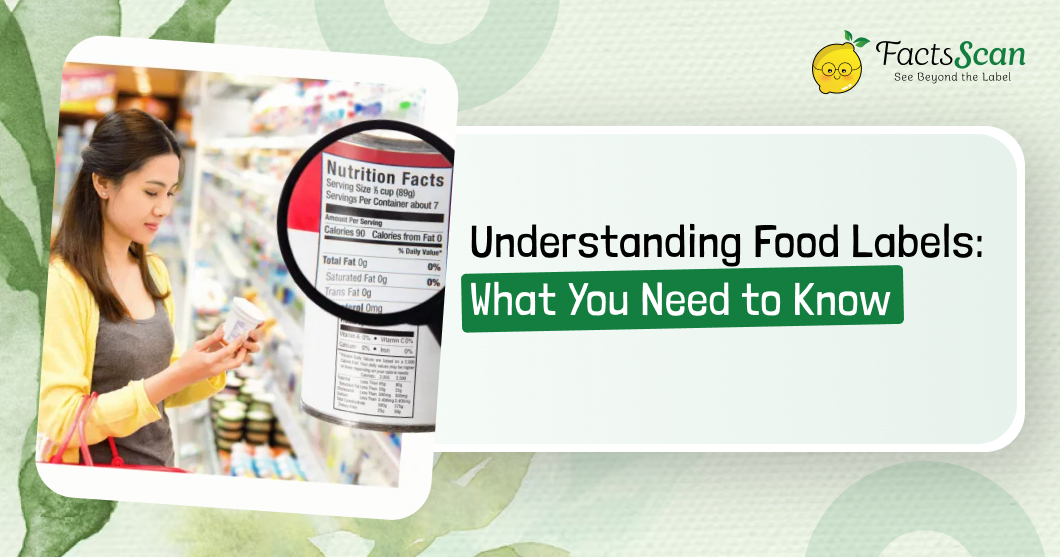Understanding Food Labels: What You Need to Know
Summary :
Did you know about food labels which are shown on food packages? You have to know about food labels…
Introduction
Nowadays we notice one thing even after cooking food at home we are not healthy and facing many health issues. Why? Because there is an abundance of misguiding labeled food packets, understanding food labels has become tougher than selecting jewelry. At FactsScan, we aim to empower you with the reality check to make informed decisions about what you buy and eat. This blog will guide you about the essential reading and understanding of food labels, so you can shop and live healthier.
Why Food Labels Matter?
Food labels are a main source of information, which gives information about what’s in your food and how it can impact your family’s health.They can help you:
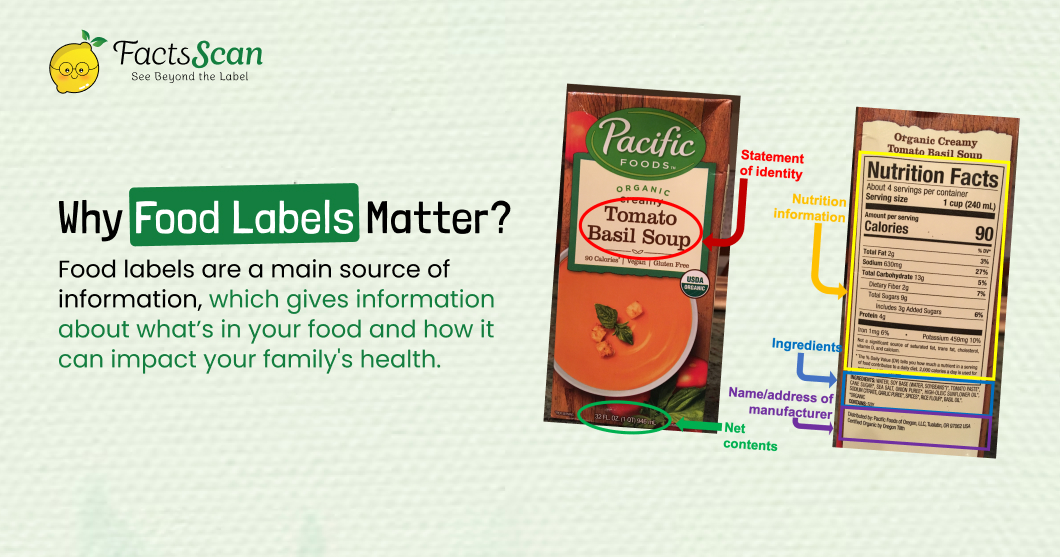
- Compare different products
- Manage dietary restrictions
- Make healthier choices
- Avoid allergens
- Understand the nutritional value of what you are going to eat.
The Basics of Food Labels
Every food label contains essential information that can guide you in selecting food. Here’s what you need to look for:
1. Serving Size
These values differ for liquid and solid food packs and they tell you the amount of food that is considered a single serving. All the nutritional information on the label is based on serving size. Be sure about how much you actually eat.
2. Calories
This indicates the amount of energy you are going to consume from a single serving. So it is most important to always keep your eyes on the calories you consume for your weight and overall health.
3. Nutrients
The label also shows all positive and negative nutrients of the food like fats, cholesterol, sodium, carbohydrates, fiber, sugars, and proteins. Here’s what you should focus on:
- Total Fat, Saturated Fat, and Trans Fat : Need to think twice before consuming it and also try to control it as it is considered a risk factor for cardiovascular disease.
- Cholesterol and Sodium : Excessive dietary fat(fat in food and drinks) consumption can increase the risk of obesity, coronary heart disease
- Total Carbohydrates, Dietary Fiber, and Sugars : The carbs you consume affect your blood sugar so always choose a food that is low in carbs and sugar and high in fiber.
- Proteins: It is the most important component of food for muscle growth, you must consume in enough portions, especially if you’re active.
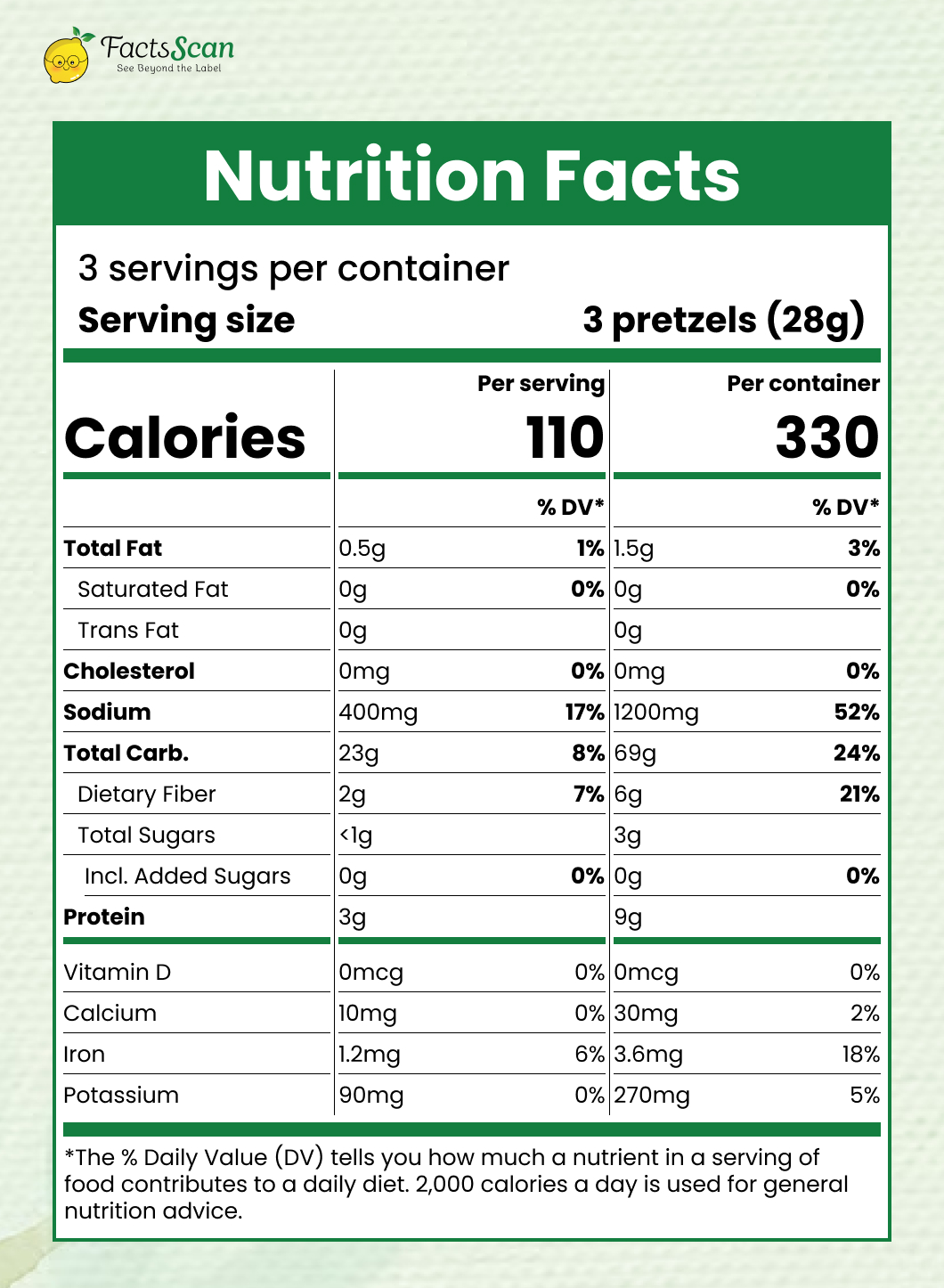
4. Vitamins and Minerals
These include mainly Vitamin D, calcium, iron, and potassium, some companies may clierly list down or not. Try to get 100% of the daily suggested amount to support overall health.
5. Ingredient List
The ingredient section is always listed in descending order as per weight, including water. It means product is maily made up from first few, so always be aware of top ingredients.
6. Percent Daily Values (%DV)
The percent Daily values show that from your daily nutrient how much this product contributes in single serving. These DV% will help to decide if a serving of food is high or low in nutrients.
How FactsScan Can Help?
Properly understanding food labels is the first step toward healthier shopping choices, but it can still be a very large process. That’s where FactsScan comes in. Our app simplifies this process by providing detailed, easy-to-understand, and accurate information with just a barcode scan. Here’s how:
1. Instant Nutritional Information
Quickly get comprehensive detailed bifurcation of all positive and negative nutritional information such as calories, fats, sugars, protein, and more.
2. Health Scores
Get a precise score for each food product using Artificial Intelligence and an approved algorithm, which makes it easiest to identify the healthiest options.
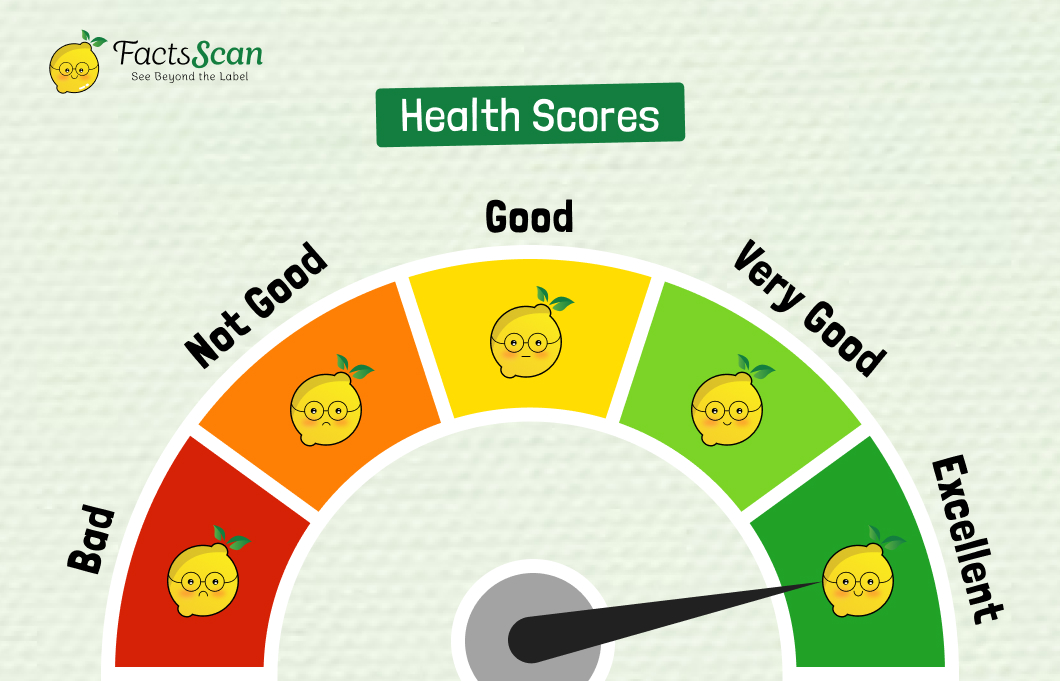
3. Ingredient Analysis
Understand each ingredient of the food and its impact on health.
4. Allergen Alerts
Stay safe with warnings about potential product ingredient allergens and user allergens.
5. Personalized Recommendations
Based on your dietary preferences and previously scanned product history, FactsScan suggests healthier alternatives of your favorite foods.
6. Favorite List
Create a favorite list of your favorite product for later use, you can create your custom favorite menu also using FactsScan.
7. Share Favorite Product List
Your favorite product list can be shared with your family and friends for healthy recommendations using easy share options.
Tips for Smarter Shopping
- Plan Ahead: Make a shopping list based on your health goal preference and stick to it.
- Use FactsScan: Scan products with the FactsScan app for instant, detailed information.
- Read analysis: Take the time and read a breakdown of all ingredients and nutritional facts provided by FactsSCan before making a purchase.
- Choose Whole Foods: Give preference to whole, unprocessed foods if possible.
Conclusion
Understanding food labels and their insight is essential for making healthier food choices. With FactsScan, you can simplify this process and take control of your healthy shopping and lifestyle. Download FactsScan today and start shopping smarter!
Ready to make Healthier Choices?
Download FactsScan now from the Google Play Store and App Store and take charge of your food choices.

Recent Articles
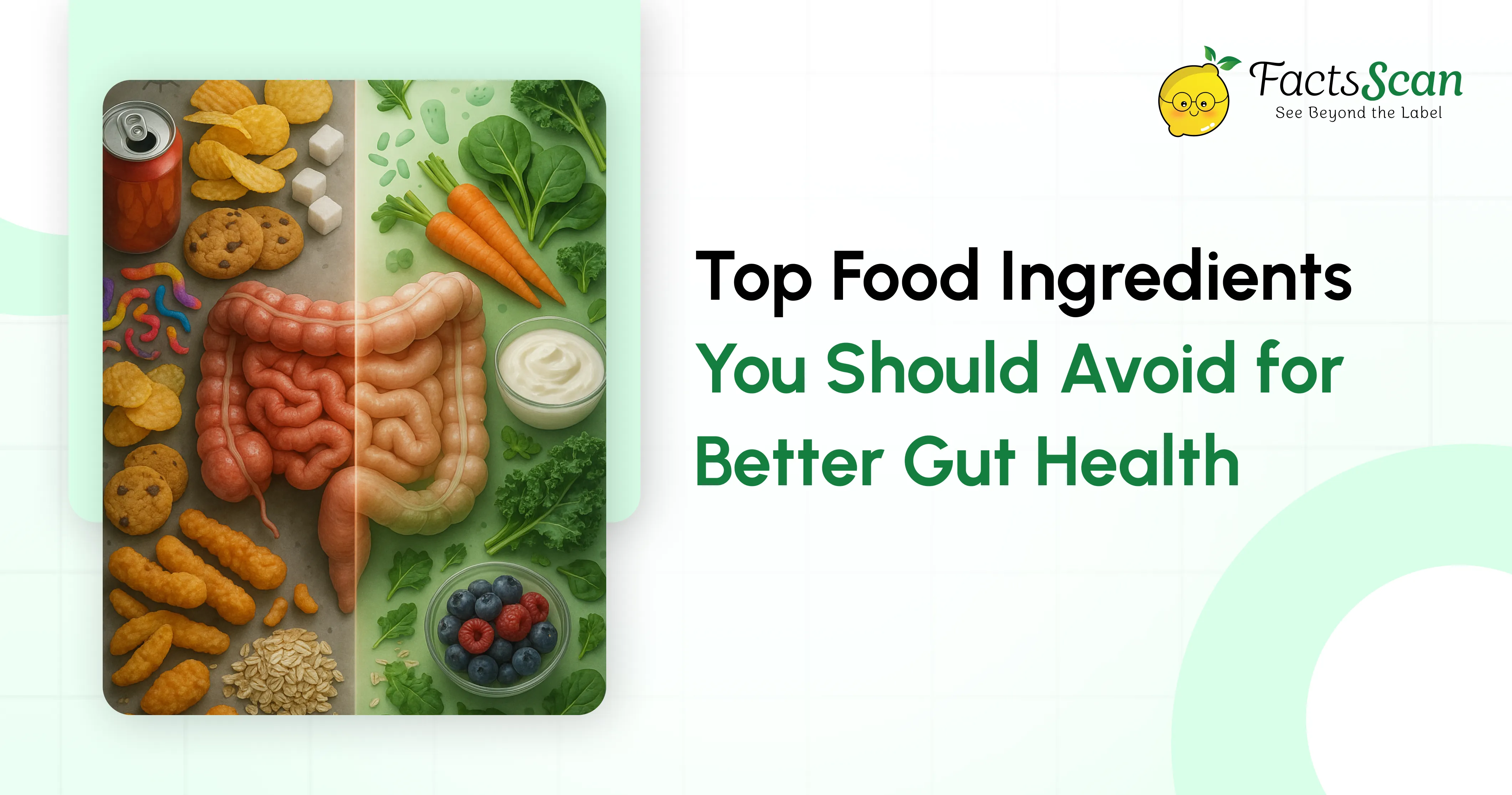
Top Food Ingredients You Should Avoid for Better Gut Health
Your gut microbiome is the foundation of your overall wellness, affecting everything from digestion to immune function. Yet many everyday food ingredients—artificial sweeteners, refined oils, emulsifiers, and preservatives—are slowly damaging this delicate ecosystem. Learn which harmful ingredients to eliminate from your diet and discover healthier alternatives using smart tools to identify nutritious, gut-friendly options that truly support your digestive health and long-term wellbeing.
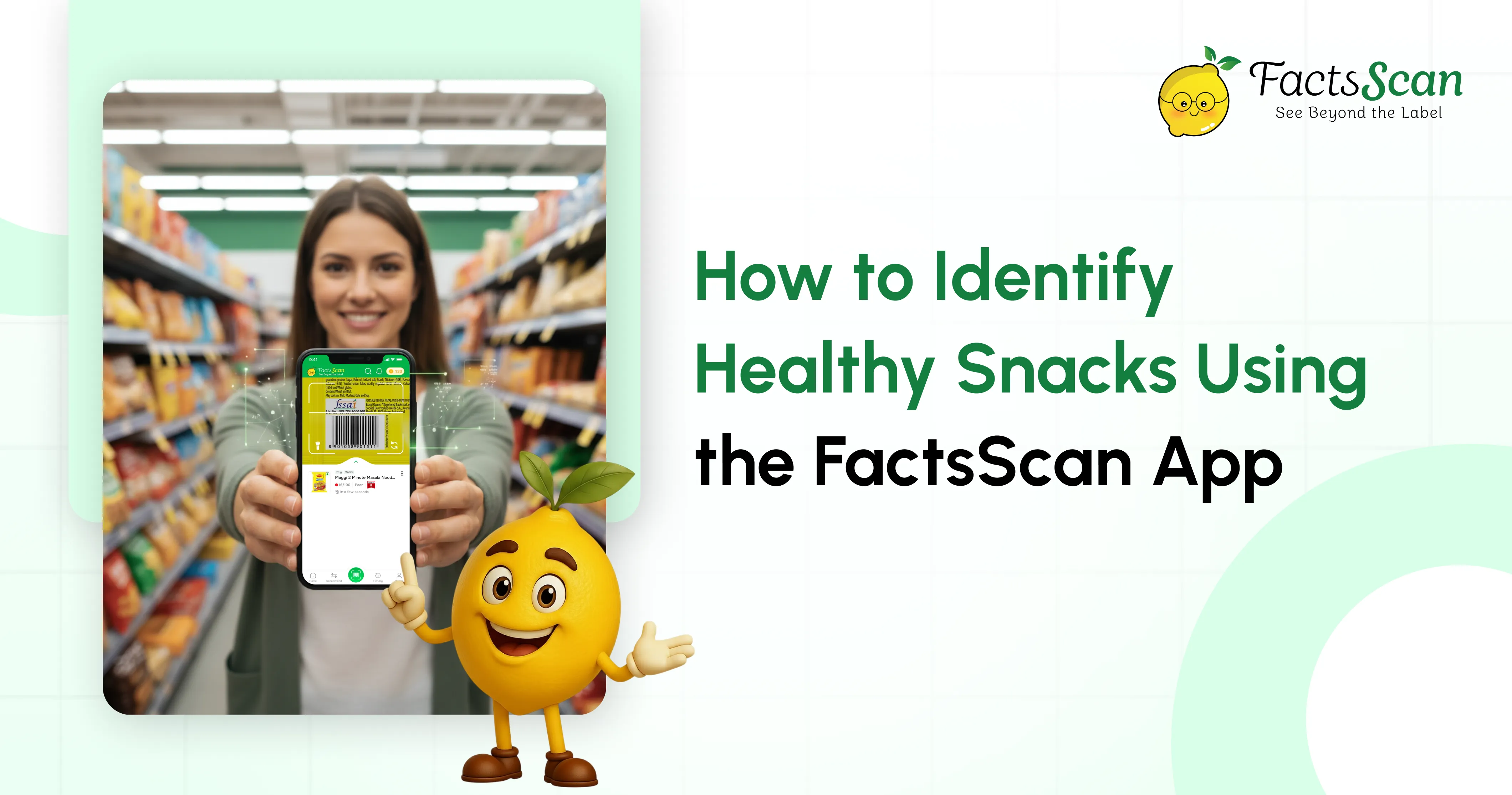
How to Identify Healthy Snacks Using the FactsScan App
Discover how the FactsScan App helps you make smarter snacking choices by instantly analyzing ingredients, nutrition scores, and additives. Learn how this AI-powered tool identifies truly healthy snacks and guides you toward better food decisions with just one scan.
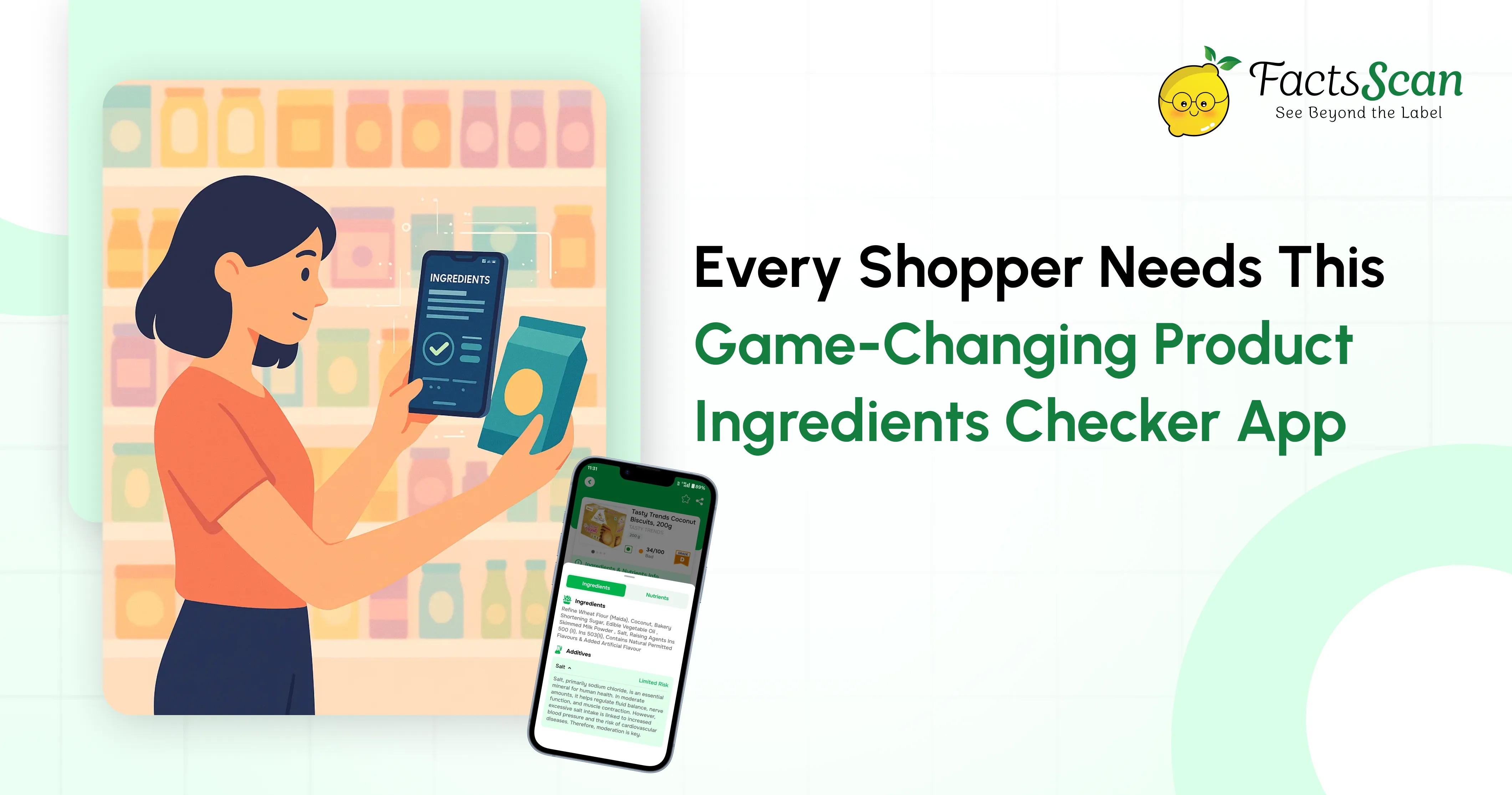
Every Shopper Needs This Game-Changing Product Ingredients Checker App
Tired of confusing food labels and hidden ingredients? This game changing product ingredients checker app helps shoppers instantly scan barcodes to uncover real nutritional facts, health scores, and safer alternatives, making smarter, healthier shopping easier than ever.
 18 Nov 2024
18 Nov 2024 5 Min Read
5 Min Read 
